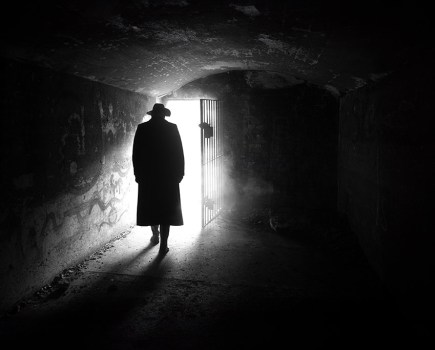APOY 2014 Round 6 – Macro World – Insects, flowers and plants
Please visit the APOY 2014 home page to find all the rules for entry, terms and conditions, the APOY ENTRY EMAIL ADDRESS, Entry Form (for postal entries), and the disclaimers that must be copied and pasted into an email entry.
Entries must be received by 5pm (UK time) on 29 Aug 2014
 Photo by Bob Garas
Photo by Bob Garas
How to enter
Please visit the APOY 2014 home page for information explaining how to enter. Please use your full name as the file name and paste
the disclaimer into the body of your email if you are sending your entry to us
electronically. We also need to know where and how you took your image, plus
the camera and lens used with aperture and focal-length details. Remember to
include a telephone number and your postal address so we can contact you if you
win.
 First Prize
First Prize
The first-prize winner will receive an Olympus OM-D E-M10 with a 14-42mm EZ Pancake zoom, a 45mm f/1.8 portrait lens, a 40-150mm zoom, a 9mm fisheye lens, a macro adapter and a street case in which to carry it all. That’s a total retail price of £1,200. The E-M10 has a 16.1-million-pixel, four thirds-sized CMOS sensor and a TruePic VII image processing system.
The 1.44-million-dot EVF displays a 100% field of view and has a 120fps refresh rate. The 14-42mm EZ Pancake zoom lens is the most compact pancake lens and has a maximum shooting magnification equivalent of 0.45x in the 35mm format. The 45mm f/1.8 portrait optic is ideal for low-light portrait work without flash. The 40-150mm zoom has high-speed AF and MSC technology, and the 9mm fisheye lens is ideal for capturing wide angle scenes.
 Second Prize
Second Prize
The second-prize winner will receive an Olympus PEN E-PL5 camera plus a 14-42mm and 40-150mm twin-lens zoom kit worth £500.
The E-PL5 offers serious image quality with its powerful 16.1-million-pixel sensor and a new OM-D component in the TruePic VI image processor. The camera has lightning-fast autofocus, a touch-sensitive LCD screen and full HD video.

Third Prize
The third-prize winner will receive an Olympus Stylus SP-100EE Ultra Zoom camera, with an impressive 16-million-pixel sensor and 3in LCD screen. The camera includes a handy autofocus lock so you need never lose a shot due to fuzzy focusing.
The camera also features a 50x optical Ultra Zoom lens with a focal length ranging from 24mm to 1,200mm, and built-in Dot Sight to make it easier to focus precisely on distant subjects.
We take a look at some tips and tricks to set you on your way to shooting landscapes at dawn and dusk
Why not try…

Photo by Andrew Wood
Getting Started
If you don’t own a macro lens, why not try using screw-on close-up lenses or even a compact camera? Many compacts have macro modes and good close-focusing distances, sometimes to 1cm. If you are using flash, it’s a good idea to test its intensity and fine-tune the exposure. You will certainly need a tripod if you are photographing moving insects or flowers that may be blowing in a breeze, and perhaps a cable release.
Think about whether you are going to take your shot in a self-constructed studio environment at home or outside. If you are using natural light, you may find you need to wait until it is bright enough. One of the advantages of macro photography is that you can take your time over the image.
 Photo by Amitava Chandra
Photo by Amitava Chandra
Colour and Light
Now the days are lighter for longer, we can all make the most of the extra daylight. Early morning or evening light is ideal for macro photography, as the soft diffused light is perfect for bringing out colour and detail. At these times, if you’re shooting insects, you’ll find them much less active, making them easier to photograph. Use a reflector to create natural sidelight or use backlighting in your composition. Think about how you can use colour creatively.
 Photo by John Webb
Photo by John Webb
Black & White
It could be that you choose to convert your image to black & white. The absence of colour will allow the shape, form and texture of your subject to take centre stage. If you do want to do this, choose a subject with interesting shapes and textures, and try to imagine how these will look when they are stripped of colour.

Photo by Marek Troszczynski
Focusing
You may be better off using manual focusing rather than AF to minimise the chances of coming away with a lot of out-of-focus images. Depth of field becomes narrower the closer the subject is to the camera, so focusing becomes critical. Choose your focusing point carefully, as a slight shift in the focus point will make a considerable difference to your image.
Ideally, if your subject is stationary and there is enough light, use a small aperture and a slow shutter speed to get your image sharp. Otherwise, you could try using off-camera flash that will also allow you to freeze movement if your subject is moving.
 Photo by Mo Alam
Photo by Mo Alam
Framing
How you frame your image will affect how the viewer sees the subject. Do you want to fill the frame with the subject so that it becomes an abstract image? Remember that less is more, so keep your compositions simple and clean.
Please visit the APOY 2014 home page to find all the rules for entry, terms and conditions, the APOY ENTRY EMAIL ADDRESS, you may use the Entry Form (for postal entries), and the disclaimers that must be copied and pasted into an email entry.
Entries must be received by 5pm (UK time) on 29 Aug 2014









